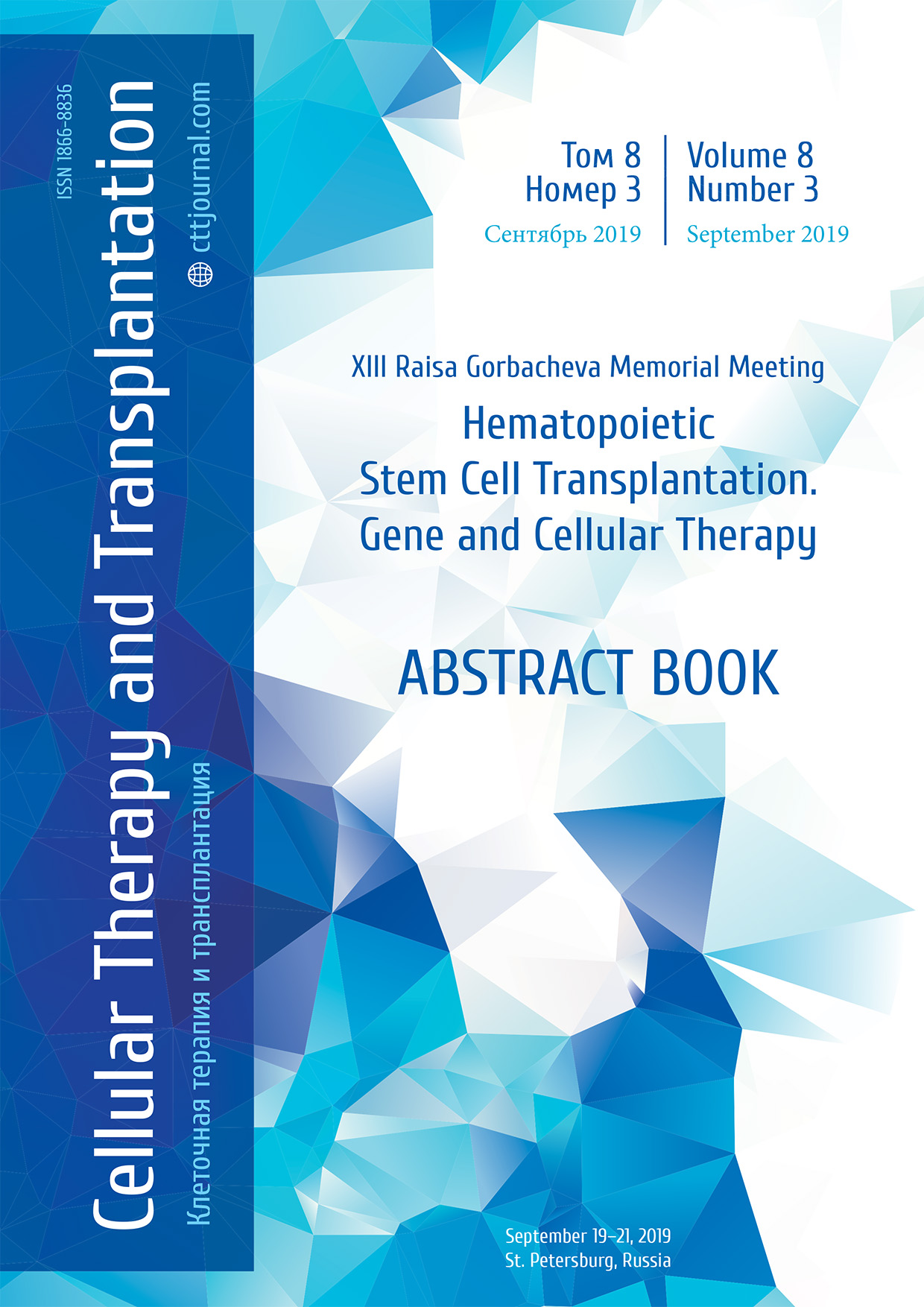Results of a quality control implementation at the stage of dimethyl sulfoxide introduction into autologous transplant of hematopoietic stem cells
Evgeniy V. Korotaev1, Andrey A. Stepanov1, Sergey A. Ponomarev1, Aleksey N. Kosarev1, Svetlana S. Karakalcheva1, Elena E. Zinina2
1 Yugra Research Institute of Cellular Technologies/Stem Cell Bank, Khanty-Mansiysk, Russia
2 Surgut Regional Clinical Hospital, Surgut, Russia
Contacts: Dr. Evgeniy V. Korotaev
E-mail: Korotaev_j@mail.ru
Summary
When conducting autologous hematopoietic stem cell transplantation (Auto-HSCT), the decrease in HSC safety at the stage of introducing cryoprotectant is usually not taken into account. Meanwhile, introduction of concentrated dimethyl sulfoxide (DMSO) negatively affects cell membranes, which leads to the death of HSCs. Implementation of quality control at this stage should optimize the safety of HSCs. Our aim was to improve the safety of HSCs by introducing quality control at the stage of introducing DMSO into the HSC leukoconcentrate.
Materials and methods
The study was conducted with 467 HSC concentrates obtained by means of peripheral blood leukapheresis from 86 patients with hemoblastoses. 167 concentrates comprised the group before optimization, the experimental group included 300 samples. The final DMSO concentration in cell suspension was 7.5%. Persistence of HSCs and their total colony forming activity (CFU) was expressed as a ratio of cellular indexes after addition of cryoprotectant to the cryopackage and before it. The number of HSCs was assessed as CD34+/CD45dim/7AAD phenotype by flow cytometry (ISHAGE protocol). CFU numbers in HSC population were evaluated after 14-day cultures in (Methocult H4435). Nucleated white blood cells (WBC) were routinelycounted by the light microscopy.
Results
The safety of HSCs was 79.4±29.0% in the group prior to optimization. Correlation analysis showed that the safety of HSCs, CFU and the integrity of cell membranes depends on the concentration of WBC (Fig. 1).
In the group of experiments with increased WBC counts (150-370)×109/L, the safety of HSCs averaged 35.5±28%. To resolve this problem, we suggest optimizing this stage, i.e., before cryoprotectant addition, we diluted the cell suspensions with a plasma expander (rheopolyglukin), in which the concentration of WBC was more than 150×109/L. The added rheopolyglucin volume was sufficient to adjust the WBC numbers to <150×109 cells/L. After this procedure, the safety of HSCs was increased (p≤0.05) to 91±14.0% (Fig. 2).
Conclusion
The safety of HSC at the stage of DMSO introducing depends on the concentration of HSC in the leukoconcentrate. Control of WBC numbers and dilution of leukoconcentrates may increase the HSC viability.
Keywords
Cryopreservation, dimethyl sulfoxide, quality control, hematopoietic stem cells, autologous transplantation.


Figure 2. The total change in the HSC, CFU, and intact
WBC numbers before and after optimization at the stage
of introduction of DMSO


